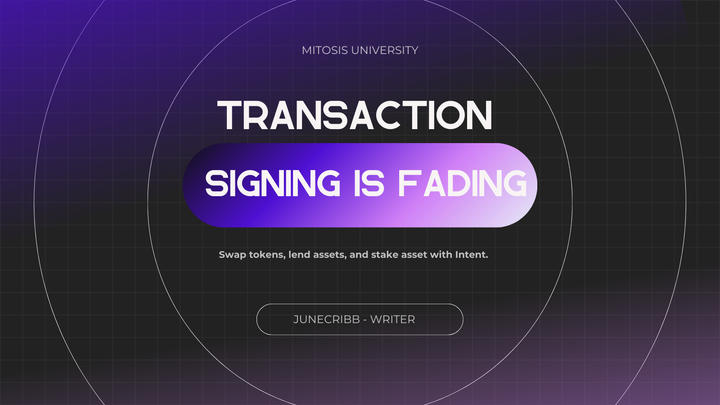The Great Divide: Why Bitcoin and Ethereum's Pump Leaves Altcoins Behind
While Bitcoin and Ethereum dance under the bright lights of new highs and powerful pumps, a curious silence echoes across the altcoin stage. The crypto market, a realm often celebrated for its collective surges, is witnessing a peculiar divergence in 2025. What complex interplay of institutional adoption, shifting supply dynamics, and evolving market sentiment has orchestrated this selective rally, leaving many smaller digital assets in the shadows, seemingly untouched by the bullish fervor?
Bitcoin's Grand Overture: The King's Unrivaled Share
The recent surge in the cryptocurrency market has been undeniably led by Bitcoin, which capitalized on bullish momentum to jump to a new all-time high above the $111,000 mark. This premier cryptocurrency's performance in the second quarter of 2025 stands in stark contrast to its struggles in the first quarter, signaling a significant shift in investor confidence. This powerful ascent by Bitcoin often acts as a bellwether for the broader crypto market, pulling altcoins, including Ethereum, along in its wake. However, the underlying drivers of this surge reveal a more nuanced story than simple market enthusiasm, pointing to a foundational shift in who is buying.
The Bellwether Effect: How BTC Leads the Pack
Bitcoin's market dominance has remained elevated, closing the week at approximately 66% in late June 2025. This strong dominance means that Bitcoin's price movements often dictate the broader market trend, making it challenging for altcoins to chart an independent, sustained rally. When Bitcoin consolidates or experiences minor corrections, capital tends to remain within BTC or flow into stablecoins, rather than rotating into riskier altcoins. This "Bitcoin Season" phenomenon, where BTC outperforms the majority of the market, is a recurring cycle, and 2025 appears to be firmly within its grasp. This selective flow of capital is largely driven by the preferences of major market participants.
Institutional Inflows: A Concentrated Feast
A fundamental force behind both Bitcoin and Ethereum's recent resilience has been the sustained buying activity from institutional investors, primarily through regulated investment vehicles. This influx of big money has created a demand dynamic that heavily favors the top two cryptocurrencies, leaving less for the long tail of altcoins.
The ETF Magnet: Where Big Money Goes
The approval of Bitcoin Exchange-Traded Funds (ETFs) has been a game-changer, ushering in a new era of institutional participation. These ETFs have driven record inflows into the Bitcoin market, reflecting a growing confidence among traditional investors. For instance, BlackRock continued to dominate ETF holdings, amassing approximately 580,430 BTC by April 2025. This influx of regulated capital from institutional players has not only legitimized Bitcoin as a mainstream asset but also provided a robust demand floor, contributing significantly to its recent all-time high. This institutional capital, seeking compliant and liquid exposure, largely bypasses smaller altcoins, which lack similar regulated products.
Ethereum's Own Dance: A Catch-Up Rally, Not a Broad Altcoin Surge
While Bitcoin led the charge, Ethereum has also experienced a significant rally, often playing catch-up to its larger counterpart. ETH surged 45% over 30 days in May 2025, notably outpacing Bitcoin's 13% gain during the same period. This strong performance has been driven by a confluence of factors, including institutional capital pouring into spot ETH ETFs and explosive growth in its restaking protocols. Despite this impressive rally, Ethereum's price currently hovers around $2,400 to $2,700 in June 2025, still significantly below its all-time high of over $4,800 from November 2021. This suggests that while bullish sentiment is strong, ETH faces unique supply and demand dynamics that influence its ability to sustain higher valuations, and its rally doesn't necessarily translate to the broader altcoin market. The very structure of decentralized finance also contributes to this selective capital flow.
Liquidity Fragmentation: The DeFi Dilemma
The DeFi ecosystem, while vibrant, continues to grapple with a pervasive challenge that hinders capital flow to smaller altcoins: liquidity fragmentation. This structural issue creates isolated pockets of capital, making efficient market movements difficult and often costly.
Isolated Pools: Capital Trapped
As the DeFi ecosystem matured, the proliferation of numerous independent blockchain networks and Layer 2 solutions led to a critical issue: liquidity fragmentation. Capital, instead of flowing freely across the entire decentralized landscape, became siloed on disparate chains. Each L2, for instance, often operated in isolation with its own liquidity pool, leading to inefficiencies and increased costs when moving assets. This splintering of liquidity undermines the very promise of a seamless, interconnected financial system, making it difficult for capital to efficiently rotate into smaller, less liquid altcoins.
Tokenomics and Vesting Schedules: Supply Overhangs
Many altcoins, particularly newer projects, face inherent selling pressure due to their tokenomics and vesting schedules, which can dampen any potential price pumps. This constant influx of new supply often outweighs demand, creating a persistent drag on prices.
The Unlocking Deluge: A Constant Supply
Token unlocks, where previously locked tokens allocated to teams, investors, and advisors are released into circulation, can create significant selling pressure. For example, Polyhedra Network's ZKJ token experienced a sharp drop in June 2025, partly due to a scheduled unlock of 15.53 million ZKJ tokens just days before its crash.
This influx of new supply, especially from early investors looking to take profits, can overwhelm demand, preventing sustained price appreciation. The anticipation of these unlocks also fuels volatility, as traders adjust their positions based on expected market movements.
The "Great Token Flood": Oversupply in the Long Tail
Beyond individual tokenomics, the sheer volume of new altcoins entering the market creates a challenging environment for capital rotation. This oversupply dilutes investor attention and capital across a vast landscape of digital assets, making it harder for any single project to stand out.
Diluting Attention and Capital
Data from Dune Analytics shows that the number of unique crypto tokens has surged nearly 10x over the past three yearsacross major blockchains. This oversupply of digital assets, often with similar use cases or speculative narratives, dilutes investor attention and capital.
Instead of a "rising tide lifts all boats" phenomenon, capital becomes fragmented across a vast number of projects, preventing any single altcoin, or even a group of them, from experiencing a significant, sustained pump. This "token flood" makes it harder for new projects to gain traction and for existing ones to maintain momentum.
Risk Aversion: A Flight to Quality
Geopolitical tensions and macroeconomic uncertainties often trigger a "risk-off" sentiment in financial markets, and crypto is no exception. This leads investors to seek safety in more established assets, leaving riskier ones behind.
Geopolitical Tremors: Shaking Out Speculation
Following U.S. airstrikes on Iranian nuclear facilities in mid-June 2025, Bitcoin initially saw a modest 1.27% dip before quickly rebounding. Ethereum also experienced a 9% decline in the immediate aftermath. While both recovered, the broader altcoin market experienced significant downturns, suggesting a pervasive negative sentiment.
During such periods of global instability, investors tend to move capital into perceived safer assets like Bitcoin and, increasingly, Ethereum, which are seen as more established and resilient, leaving riskier, less liquid altcoins vulnerable to sell-offs.
Narrative Vacuum: The Missing Story
Many altcoins, despite their technological promises, struggle to capture sustained investor interest due to a lack of compelling narratives or clear utility that resonates with a broader audience. Without a strong, unique story, they fail to stand out in a crowded market.
Beyond Hype: The Need for Substance
In the fragmented attention economy of Web3, projects with groundbreaking technology can languish in obscurity while memecoins with no inherent utility capture billions in market value simply by commanding attention.
While some altcoins have strong technical foundations, they often fail to articulate a clear, unique value proposition that attracts sustained engagement beyond short-term speculation. Without a strong narrative or unique catalyst, altseason may remain on hold, as investors prioritize projects with clear use cases and a compelling story.
Retail vs. Institutional Behavior: Different Playbooks
The dynamics of the current crypto market are heavily influenced by the behavior of institutional investors, whose playbooks differ significantly from those of retail traders. This divergence in strategy impacts where capital is allocated, favoring established assets.
Big Money's Focus: Stability Over Speculation
Institutional capital, flowing through regulated channels like ETFs, is primarily focused on Bitcoin and Ethereum due to their established market presence, liquidity, and increasing regulatory clarity.
These large players prioritize stability and long-term value accrual over the high-risk, high-reward speculation often associated with smaller altcoins. This means that even when Bitcoin and Ethereum pump, this capital doesn't necessarily "rotate" into altcoins in the same way retail capital might have in previous cycles. Their investment strategies are more conservative, leading to a concentrated rally rather than a widespread one.
Technical Indicators: Bitcoin Season Confirmed
Technical analysis of the crypto market often provides insights into capital flows and market cycles, and current indicators firmly point to a "Bitcoin Season." These metrics confirm the dominance of the market leader and the lack of broad altcoin participation.
The Altcoin Season Index: A Telling Metric
The Altcoin Season Index, a gauge comparing the performance of the top 50 altcoins against Bitcoin, has been lingering at a low range of 22-27 in July 2025. An index below 25 is typically considered "Bitcoin Season," clearly indicating that over the past 90 days, the investment returns of most altcoins have underperformed Bitcoin.
Historically, a decline in Bitcoin dominance below 60% has been associated with the start of altcoin seasons, but Bitcoin's dominance has remained elevated at around 66%, signaling that capital rotation into smaller altcoins is not yet occurring on a significant scale.
Regulatory Uncertainty: A Chilling Effect
Despite some positive shifts in the regulatory landscape, ongoing uncertainty continues to make investors cautious about smaller, less established altcoins. This lack of clear rules creates a barrier to broader adoption and investment.
The Uncharted Waters: Risk for Smaller Projects
While the U.S. has made strides in crypto regulation, with Congress advancing several major bills like the GENIUS Act for stablecoins, the regulatory framework for the vast majority of altcoins remains unclear. This lack of clarity, particularly regarding whether certain tokens will be classified as securities, creates significant risk for investors.
Without clear guidelines, institutional investors are hesitant to allocate capital to these assets, and even retail investors may shy away from projects that could face future regulatory crackdowns. This uncertainty, coupled with the inherent volatility of altcoins, makes them less attractive during periods when safer, regulated options are available.
Conclusion: A Selective Rally in a Maturing Market
The current crypto market rally, while impressive for Bitcoin and Ethereum, has largely bypassed altcoins due to a complex interplay of factors. Institutional capital, flowing through regulated ETFs, has concentrated demand on BTC and ETH, leaving smaller altcoins starved for liquidity. This is exacerbated by the inherent fragmentation of DeFi, the constant supply pressure from altcoin vesting schedules, and the sheer oversupply of new tokens diluting attention. Furthermore, a prevailing risk-off sentiment driven by macroeconomic and geopolitical uncertainties pushes investors towards perceived safer assets. Until altcoins develop stronger, unique narratives, demonstrate clear utility, and benefit from more favorable capital rotation dynamics, they may continue to remain in Bitcoin's shadow, awaiting their own season to shine.
Refer To:
🔗Links:



Comments ()